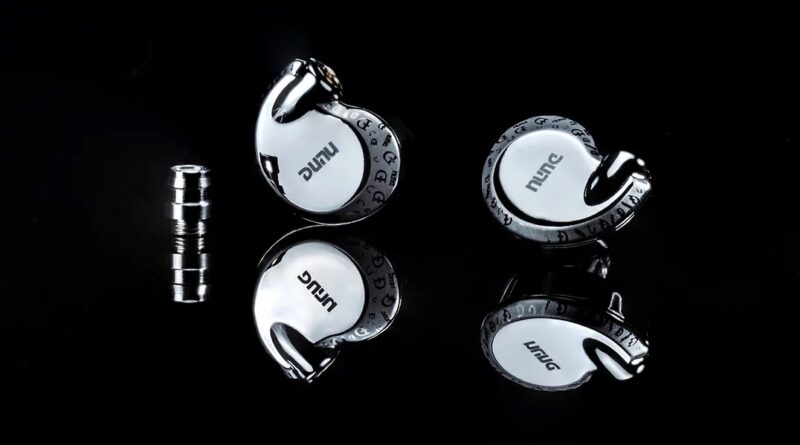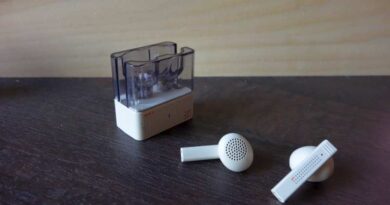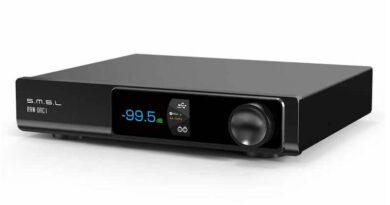Dunu Falcon Pro Review – Warm Intimacy
Falcon Pro are Dunu’s entry level model on their Eclipse lineup – the one featuring Zen / Zen Pro and Luna on its higher tiers.
Featuring a single dynamic driver and a $219,99 price point Falcon Pro compete on a quite interesting market segment, populated – as usual – by a lot of underwhelming (or downright garbage) competing products alongside a few very solid longstanders.
In this Article
At-a-glance Card
| PROs | CONs |
| Very good imaging | Lacking on separation and layering |
| Musicality-focused laidback warm tonality | Overly bloomy, invasive, untextured mid-bass |
| Well executed, polished trebles | Average soundstage |
| Good mids, and female vocals | Lacking on detail retrieval (both trebles and bass) |
| Good cable |
Full Device Card
Test setup
Apogee Groove / Sony NW-A55 mrWalkman / Questyle QP1R / Ifi hip-dac2 / Cowon Plenue 2 – final E clear eartips – lossless 16-24/44.1-192 FLAC tracks.
Signature analysis
| Tonality | Falcon Pro feature removable earpiece nozzles, and a selection of 3 different alternatives are bundled with the package – labelled “Reference”, “Transparency” and “Athmospheric Immersion”. Each nozzle has different sizes (diameter and length) and a different mesh, resulting in some audible impact on the delivered musical experience. Auditioned with their Reference Filter at first, Duno Falcon Pro offer an obviously low-enhanced presentation, coming accross as warm-coloured and laid back. Low mids and especially midbass notes are definitely bloomy. Timbre is smooth, rounded. The Transparency filter very modestly tames the bass line, by ear I would say by less than 1dB, and enhances highmids and presence trebles by a more significant margin. The result is a bit more highend openness but not enough de-accentuated midbass, the combination of which does not reach a balanced presentation level. The general tonality stays warm colored. Timbre stays smooth as the added treble accent doesnt come with particular edgyness. Curiously enough for a single-DD I notice a slight but perceivable lack of cohesion between such enhanced trebles and the persisting midbass importance. The Athmospheric filter applies the same minimal taming to the bass line as the Transparency one does, and enhances highmids (slowing their transients down a bit in the process) sooner than its Transparency sibling, but a down-tame this time is applied to presence trebles, and an even more serious tonedown happens on brilliance. The result is an even more soft-toned, relaxed, more intimate and warmer presentation. For my own tastes Athmospheric is a no go: its evident bass accent pairs badly with too relaxed transients, and a general blurryness that transfers a too dark and unresolved feeling to me. In terms of horizontal coherence Reference is best, but in terms of tonality I still find it too invasively bassy so I settled for Transparency, accepting the modest tonal incoherence I mentioned above. I conducted most of my audition on Transparency nozzles. |
| Sub-Bass | Sub Bass on Falcon Pro is modestly rolled off but most of all subdued to mid-bass slowish transients and warmth. Very little rumble emerges from that, and it’s a pity. This applies to all nozzles. |
| Mid Bass | Falcon Pro’s midbass is not overall bad, but it surely plays the elephant in the room’s role, which is I guess a quite objective reality, and in addition to that I find it too bloomy, which is a much more subjective point of course. It’s anyhow evident that midbass is conditioning the entire presentation setting the ambient to warm, soft and relaxing mood, lacking on punch and definition and showing only limited texture. |
| Mids | Mids on FalconPro are recessed in positioning but OK in quality. Note weight especially is good, on the other hand they don’t sound particularly “organic”. On their low part they are subdued to midbass and this generates more than some limitation in terms of definition and layering. Highmids are much better. Transparency nozzles make highmids leaner, which is in some case a pro, othertimes a limitation – depending on musical requirements of course. |
| Male Vocals | Male vocals are full, lush but slow so for example baritones fail to be organically cavernous. A bit better are tenors which are still a bit too bloomy but definitely better detailed and closer to reality. |
| Female Vocals | Females are also nicely bodied, and less bloomy than males which makes them nicely liquid, pleasant. Transparency nozzles make them a tad faster and clearer, but on the flip side they bring them dangerously close to sibilance at times. |
| Highs | Treble is no doubt my preferred part in Falcon Pro’s presentation. They come accross reasonably vivid, polished and clear on the Reference nozzles, and a bit furtherly enhanced and slightly clearer on the Transparency nozzles. On the other hand they don’t go as far as being sparkly, let alone airy – not even on the Transparency nozzle. And the clarity from this section is not enough to compensate on the warmth and intimacy imposed by midbass. |
Technicalities
| Soundstage | Referred to direct competitors Falcon Pro draw an average stage, with some decent depth and height. Reference nozzles are best at this, Athmospheric worst. |
| Imaging | Macrodynamics (a.k.a. imaging) is the single aspect where Falcon Pro excel: instruments and voices are all given very good body, almost a 3d-personality, and they are wonderfully positioned on the stage. Which makes scarce layering and microdynamics an even bigger pity. |
| Details | Detail retrieval is very modest, both on highmids and trebles, and even more so on mid and sub bass. While this sounds coherent with the general laidback tuning choice, I still believe something better might have been made here |
| Instrument separation | The aspect I liked less on Falcon Pro is the general – and quite evident – lack of resolving power. Instrument voices are always at least somewhat “mélanged” together, which may be nice from the musicality standapoint, but when excessive it fails to deliver proper separation and clean layering. |
| Driveability | Falcon Pro are quite sensible therefor “easy to drive” loud enough even from lowend systems. Beware though – as always amping power is not the same as amping quality, and Falcon Pro do require a good bass-controlled source, and surely not a warm one, or their naturally slow midbass would resonate even warmer/darker than it already is. |
Physicals
| Build | Falcon Pro shells are made of stainless steel and appear evidently sturdy and greatly designed and realised. The finish on the external side is very elegant, with sandblasted logos onto mirror-chrome surface. Interchangeable nozzles are threaded for secure screw-in/screw-out operations. Ace stuff, really. Multiple air vents are present on the internal housings’ side. |
| Fit | Falcon Pro fit me quite easily, thanks to relatively long nozzles and medium-sized well-shaped housings which sit quite well into my conchas. |
| Comfort | Once fitted Falcon Pro feel definitely comfortable to me, I can wear them for protracted lengths of time easily. |
| Isolation | Just average: the passive effect of well fitting housing shapes is limited by the multiple vents. |
| Cable | The bundled cable is very nice from many respects. Modular termination, with a 3 main plug modules included (3.5, 2.5 and 4.4mm), a high purity (6N) silver plated OCC structure, accepbtable flexibility, and very well working MMCX connectors (patented, according to Dunu) |
Specifications (declared)
| Housing | Stainless Steel, dual-chambered, anti-resonance shell design. Interchangeable tuning nozzles (Atmospheric Immersion, Reference, Transparency) |
| Driver(s) | 10 mm diaphragm with amorphous diamond-like carbon dome and fully independent suspension surround, > 1.6 T External Ring-Type Neodymium Magnet |
| Connector | MMCX |
| Cable | 6N (99.9999% pure) monocrystalline silver-plated OCC copper litz cable, 3 termination options included (4.4, 2.5, 3.5mm) |
| Sensitivity | 112 dB |
| Impedance | 26 Ω |
| Frequency Range | 5 Hz–40 kHz |
| Package and accessories | n/a (I assessed a pre-unboxed unit, did not receive the full package) |
| MSRP at this post time | $ 219,99 |
Some critical comparisons
vs Tanchjim Oxygen ($260)
The comparison is pertinent on the “similar” pricing and technology (1DD) standpoints, although it must be noted that Tanchjim Oxygen are by designed tuned towards a “lean harman”, neutral organic target, Falcon Pro towards a V shaped warm one, which of course should set different apriori expectations from either product.
With that being said, Tanchjim Oxygen’s midbass is way faster, more controlled and articulated. Mid bass, down to sub bass notes are much more textured and technical on Oxygen compared to the bloomier ones issued by Falcon Pro.
Although not a detail monster by design, Oxygen also retrieve significantly more subtleties both from highmids/trebles and bass. Note weight is leaner on Oxygen accross the spectrum – maximally so on midbass, but on mids and trebles too. Oxygen are better at layering and separation.
Overall, Oxygen are obviously preferrable on acoustic music (classic, jazz), Falcon Pro’s “meatier” personality may be preferrable on folk, progrock & such.
vs final E4000 ($149)
Oppositely from the previous case, there is quite some common ground between Falcon Pro and E4000 in terms of intended tuning as both are clearly designed aiming at a warm-colored tonality.
With that being said, E4000’s tonality is evidently more balanced, with a much less invasive, color-imposing, slow bidbass, a bit, but definitely, clearer highmids and trebles.
On a more technical level, Falcon Pro deliver more solid note weight in the trebles, but less definition on trebles and everywhere, really. Falcon Pro offer a somewhat more extended stage size (both on width and depth), E4000 are way better in terms of layering and instrument separation.
Falcon Pro are easier to bias, E4000 require more current to properly open up.
Considerations & conclusions
Dunu Falcon Pro are honest, well executed single-DD IEMs, exuding design and construction quality from all the angles you can watch them from. Their tuning is very sided, so to say, towards a warm, laidback, intimate presentation which clearly aims at pampering the user more on the overall musical experience then at stunning on technicalities.
Their features do not coincide with my personal preferences neither from the audio nor from the musical standpoints, but that’s of course totally personal.
I received a sample unit kindly provided by co-blogger Kazi.







